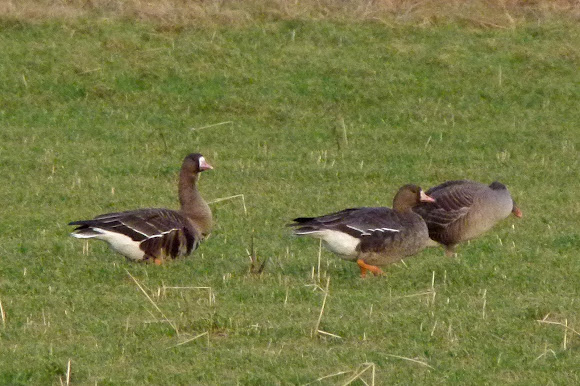21st - 28th February
The last week of February brought a small but diverse selection of avian oddments to the island, and a dramatic amelioration of the weather in the last couple of days of the month allowed some passage of small migrants. Three European White-fronted Geese arrived amongst the Greylags on the 22nd and remained all week, and a Dark-bellied Brent Goose was also present on the 24th. A Knot on the 22nd was an addition to the island year list, as was an unseasonal first-winter Little Gull on the 23rd that was followed by an adult three days later. The first Little Grebe of the year turned up on the 25th, with another arriving on the 28th; a juvenile Glaucous Gull was also seen on the 25th; and the 26th brought a Rook, a Lapland Bunting and a Song Thrush. The first four Meadow Pipits of the year were seen on the 28th, along with the first Lesser Black-backed Gull. A reduction in the wind opened the floodgates for a few flocks of Skylarks to move, with the first noticeable arrival of 35 on the 22nd being quickly followed by increasing numbers up to a peak of 151 on the 26th.

The three White-fronted Geese included one distinctively well-marked adult bird. Picture by Paul Brown.
Numbers of other species remained much the same, although Black-headed Gulls continued their slow growth in numbers and the wintering Twite flock was augmented by migrants until it reached at least 94 birds on the 28th. A visit to watch the Hen Harrier roost at Hooking only produced two birds, although at least one other was known to be present on the island.

The Twite flock is favouring a field of sacrificial crop near Kirbest. At least two of the birds are wearing colour-rings from Orkney mainland. Picture by Richard Else.

At least two ringtail Hen Harriers have been seen most days. Picture by Richard Else.
Comments